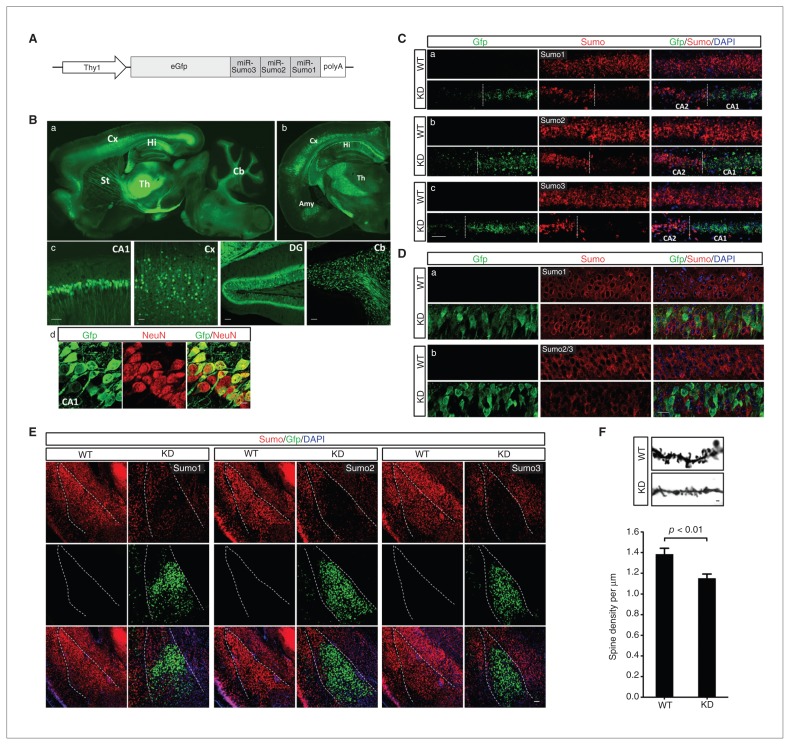Fig. 1.
Generation and characterization of small ubiquitin-like modifier 1–3 knockdown (Sumo-KD) mice. (A) Scheme of the DNA fragment used for generating Sumo-KD mice. (B) Widespread expression of the transgene green fluorescfent protein (Gfp) in KD mouse line 27 (a: sagittal section; b: coronal section; c: different brain areas) and colocalization of Gfp with NeuN (red) in CA1 pyramidal neurons, (d) confirming neuron-specific transgene expression. (C–E) The Gfp-positive cells exhibit (C) a marked decrease in Sumo1–3 mRNA and (D) Sumo2/3 protein levels in the hippocampal CA1 subfield and (E) in Sumo1–3 miRNA levels in the amygdala (outlined). (D) Changes in Sumo1 protein levels were less pronounced than Sumo2/3 levels. (F) Synaptic spine density was significantly reduced in CA1 neurons of Sumo-KD compared with wild type mice. Amy = amygdala; Cb = cerebellum; Cx = cortex; DG = dentate gyrus; Hi = hippocampus; St = striatum; Th = thalamus; WT = wild-type. Scale bars: 50 μm in B-c and C; 10 μm in B-d; 20 μm in D; 100 μm in E; and 1 μm in F. DAPI = 4′,6-diamidino-2-phenylindole.

